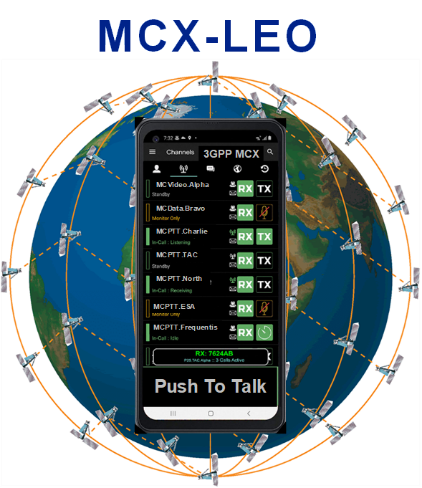
-
StatusOngoing
-
Status date2023-12-16
-
Activity Code3C.028

The mission critical services can be used for public safety applications and maritime safety applications, Future Railway Mobile Communication System, Secure Airport communication and for general commercial applications, e.g., utility companies, and maritime usage. The Mission Critical Services are utilized in a wide range of scenarios, such as industrial control systems, mobile health care, real time control of vehicles etc. There are various public safety use cases that can be served only by satellites. Other use cases can be served by satellites in a more efficient way compared to terrestrial infrastructure. There are areas that can be covered only by satellites, including extreme geographies or remote areas across seas, oceans and other locations where terrestrial coverage is absent.
The main objective of the present technical proposal is the verification of Mission Critical Services for multimedia public safety scenarios including the application of MCPTT, MCVideo, and MCData services deployed in a harmonized LEO Constellation Network interworking with 5G network, bearing in mind that LEO satellite Constellation Networks provides connectivity across the globe.
The activity designs and develops a system demonstrator to verify the compliance of the MCX-LEO system’s key figures w.r.t. latency, group call management, priority management with the Mission Critical Services requirements specified by 3GPP.
MCX services provision is bound to very short PTT latencies, from pressing the PPT button on MCX UE to getting the authorisation by a beep signal to speak. The time efficient routing and forwarding of the control plane and user plane data through LEO satellite constellation is one of the major challenges in this activity.
The final product allows the provision of MCX services in areas with no or limited terrestrial radio coverage in compliance with the 3GPP specifications without compromising the tough Packet Delay Budgets and Quality of Service.
The system provides the first responders with 5G compliant direct access of MCX smartphones over LEO satellite constellation in areas with no 5G connectivity. Furthermore, the system provides the MCX users with private call and group call in Mission Critical PTT, Data and Video services.
The System architecture comprises an integrated NTN 5GS with LEO satellite constellation utilizing Inter-Satellite Links (ISL) in fronthaul segment. The system features a full gNB processed payload architecture as reported in 3GPP TR 38.821. To close the link budget, the MCX User Equipment are linked to a high power Mobile Base Station Relay (MBSR), enabling MCX service provision for handheld devices with limited EIRP, as reported in TR 22.839 and specified in TS 38.401, implemented as a UE-to-Network Relay UE to allow for network access by multiple MCX UE participants that have no direct access to the payload as a consequence of their limited power. The envisaged system architecture can be applied to every MCX use case allowing both single and multiple MCX UE affiliations in private and group calls.
Starting from system definition the activity generates a full set of self-contained technical requirements, as input to MS1 (SRR). In MS2, upon a trade-off analysis, the activity selects down the most appropriate system architecture and delivers a detailed system design, to be approved in MS2 (SDR). The activity then goes on to implement a simulator that allows the verification of the requirements with focus on MCX service requirements. The goal of the final milestone MS4 is the verification and validation of the requirements showing an end-to-end MCX service provision over LEO satellite constellation.
Upon a successful kick-off meeting attending ESA and Frequentis members on Project Start: 14 March 2023, the Frequentis team has started specifying the MCX-LEO system scenarios and general requirements. The next review milestone is planned as System Requirement Review (SRR) in Q2 2023.


